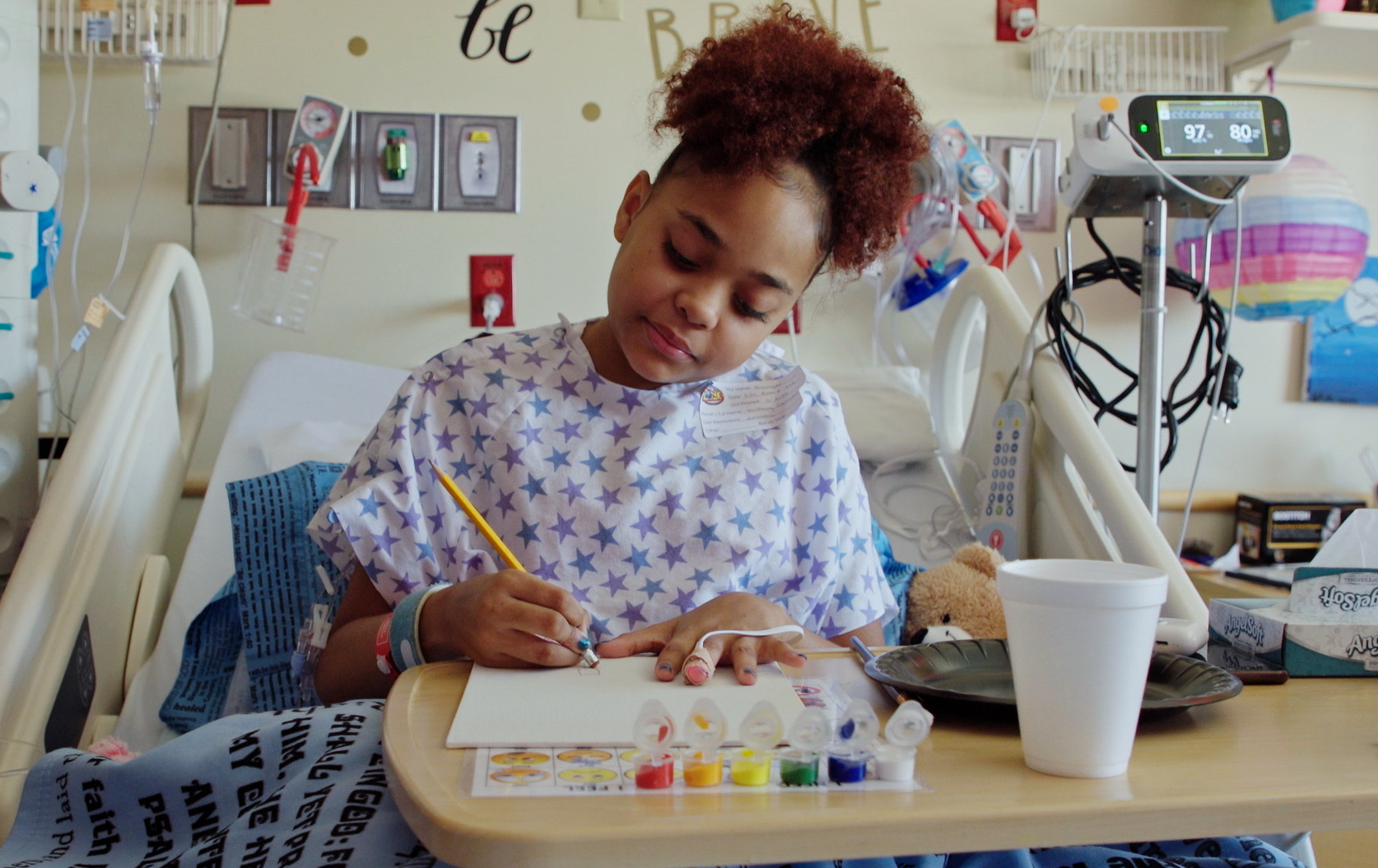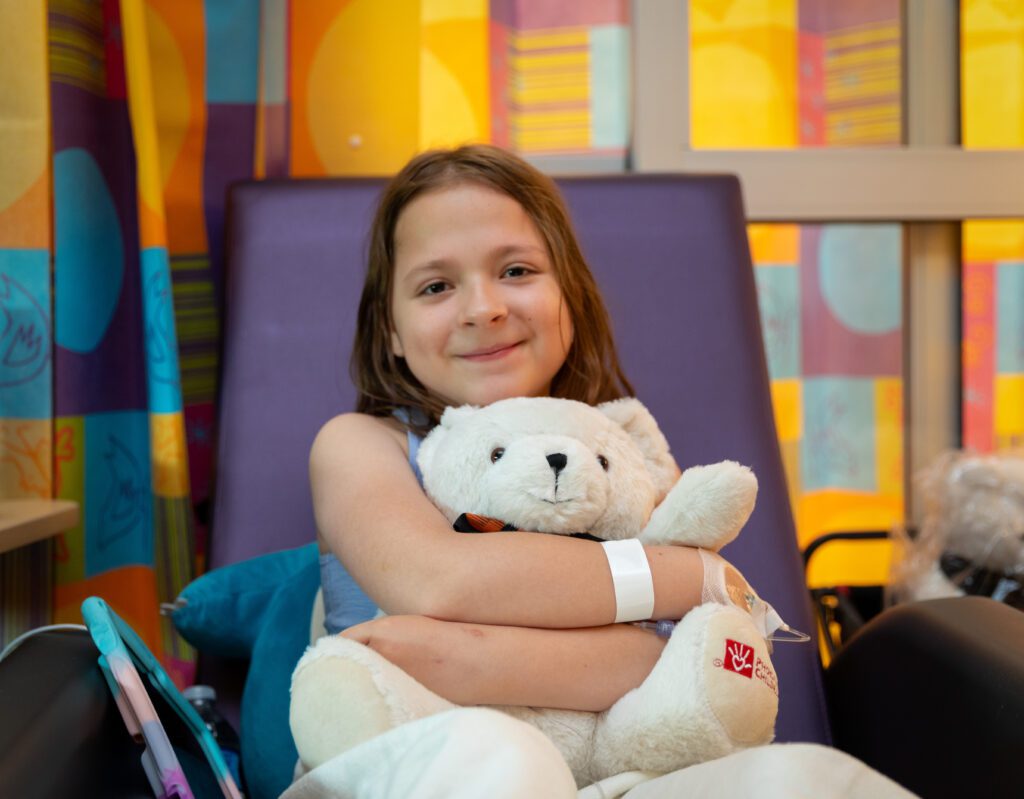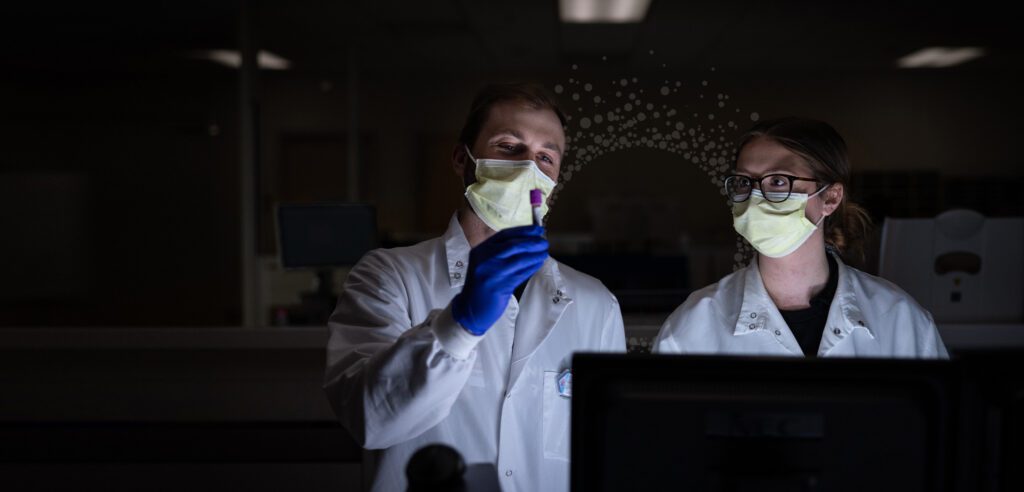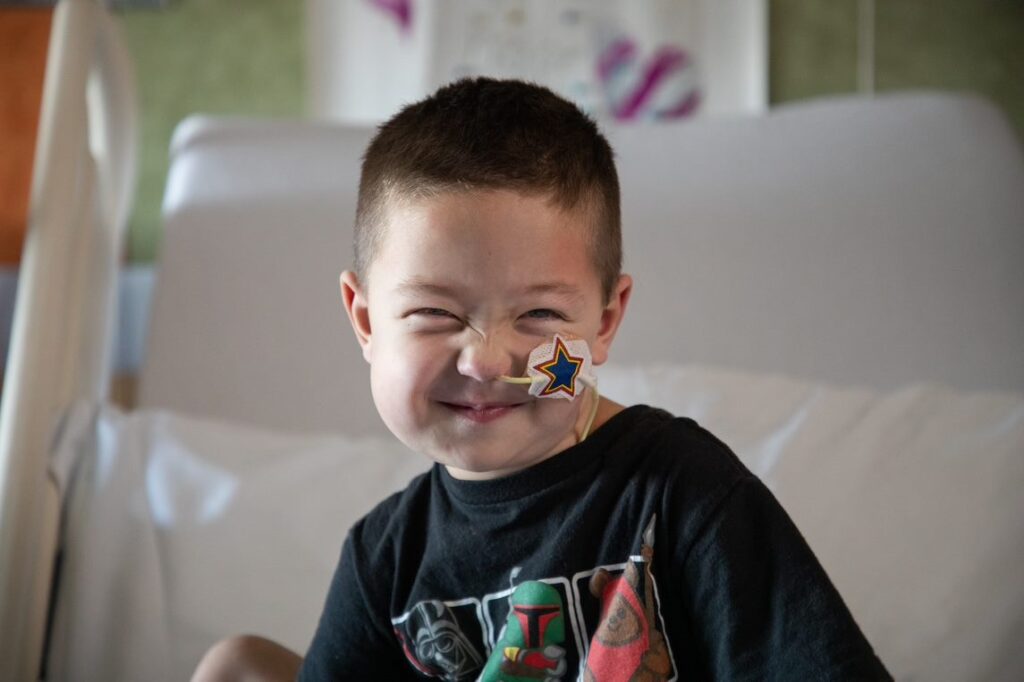With her cart full of supplies in tow, Phoenix Children’s art therapist Stephanie Brinkop sits by the bed of a patient and begins a conversation with a proposal.
“I have a special project to challenge your creativity. Are you up for it?”
“Yes,” replies the middle-school-age girl.
Brinkop pulls out her bag of supplies. Out spill a rubber duck, pillow stuffing, rhinestones and clay.
“The challenge is to create a beautiful space—sometimes I like to say a safe space—for the ducky,” Brinkop says. “Everything else is up to you. You don’t have to use all the materials, but I encourage you to use some of them.”
The patient giggles in response.
“This is called process-oriented art,” Brinkop explains. “We don’t know what the result is going to look like, which is good for our creative mind. There’s no right or wrong way to do this. You are in charge of the project.”
The girl begins by picking up some colorful pipe cleaners. Then she reconsiders and grabs the popsicle sticks instead.
“It doesn’t take long for creativity to go wild,” Brinkop says.
Relaxation and creative freedom
Art therapists like Brinkop invite patients to embrace the artistic process without stressing about the result. This hope-inspiring process can help restore a patient’s confidence. All the factors of the piece are under the child's control, including the decision to display their work. The finished piece reassures the child they are a person who can accomplish a great deal.
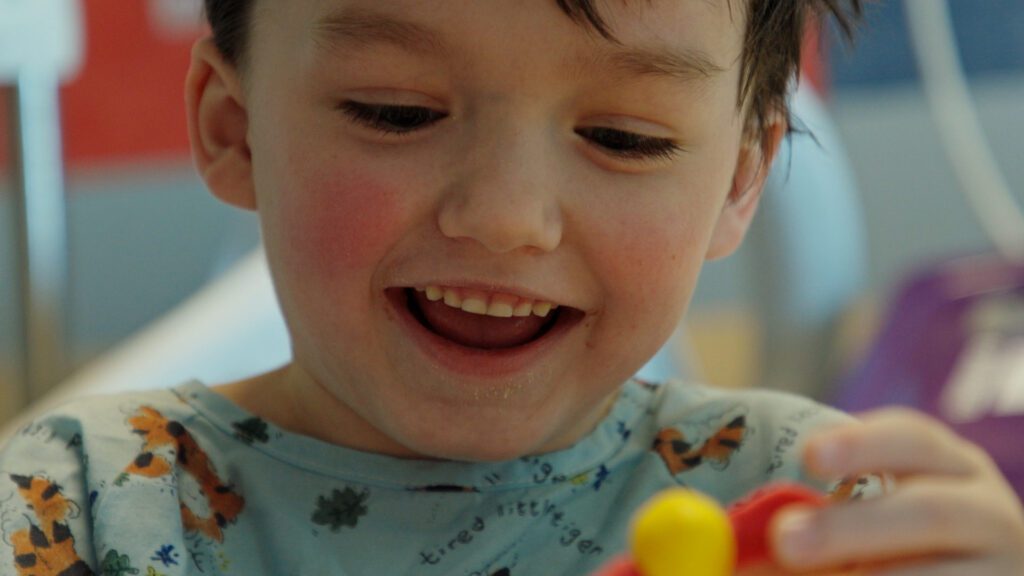
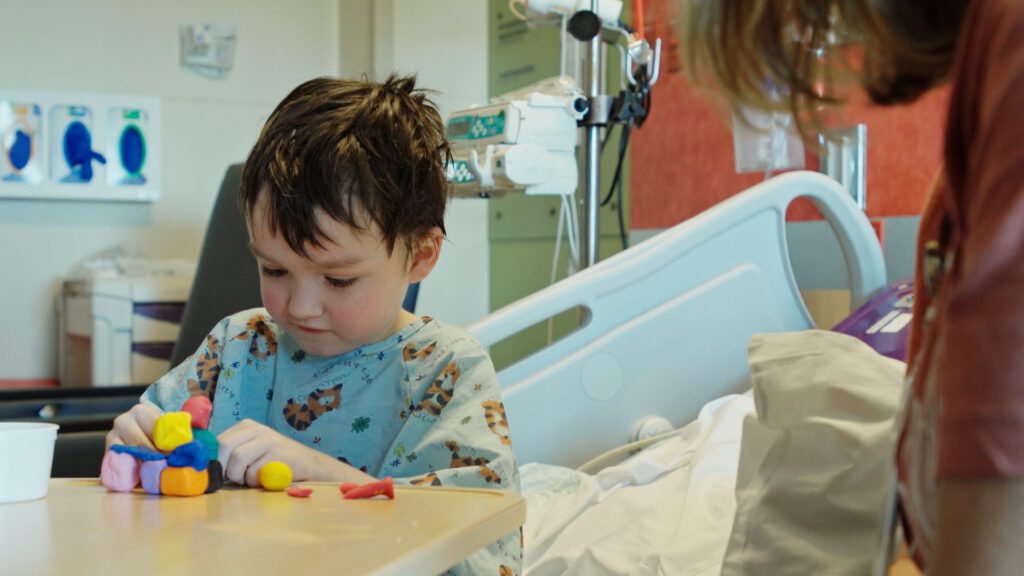
“When we engage in our making—I call it a moving meditation—we are so focused on what we’re doing that it allows us to take a breather from our worries,” Brinkop says. “The patient loses themself in the art process. They also have a beautiful outcome that they’re proud of—they can put it up in their room as a reminder of what they made.”
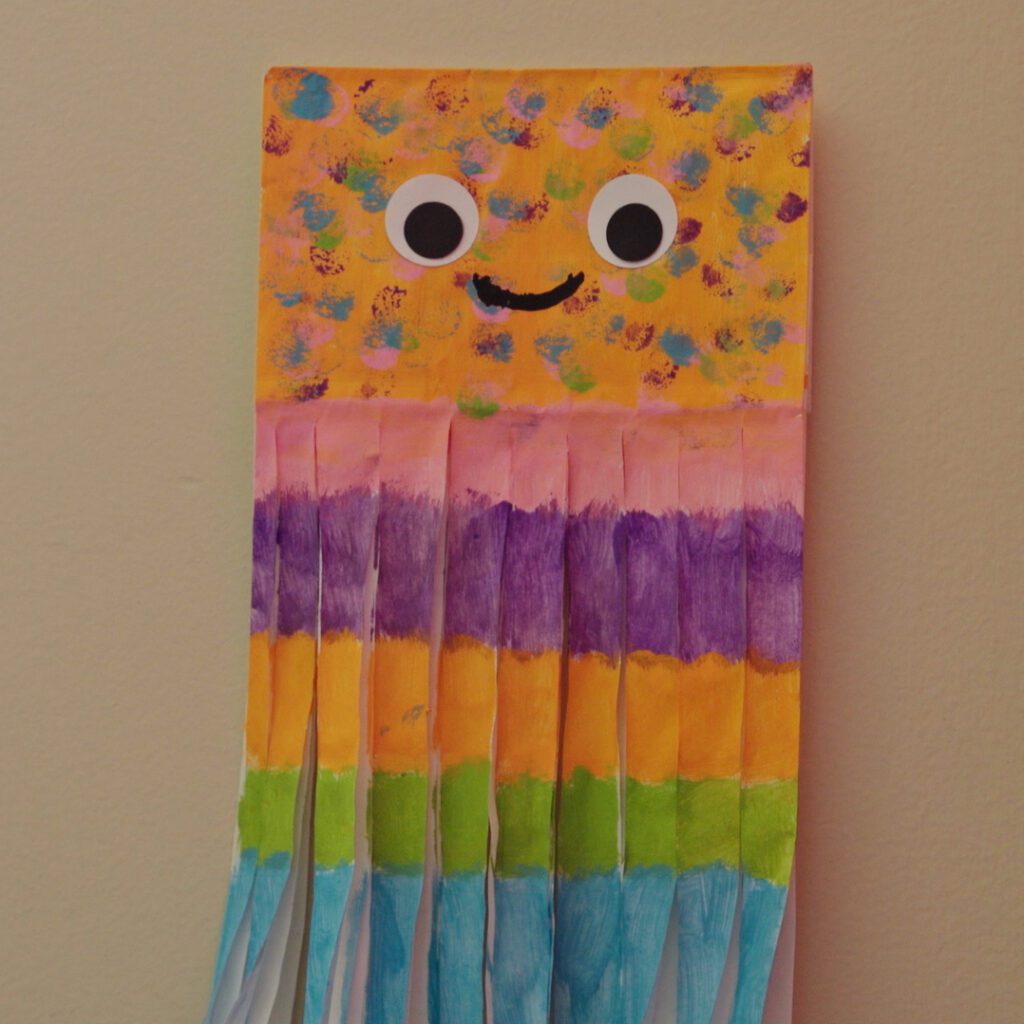
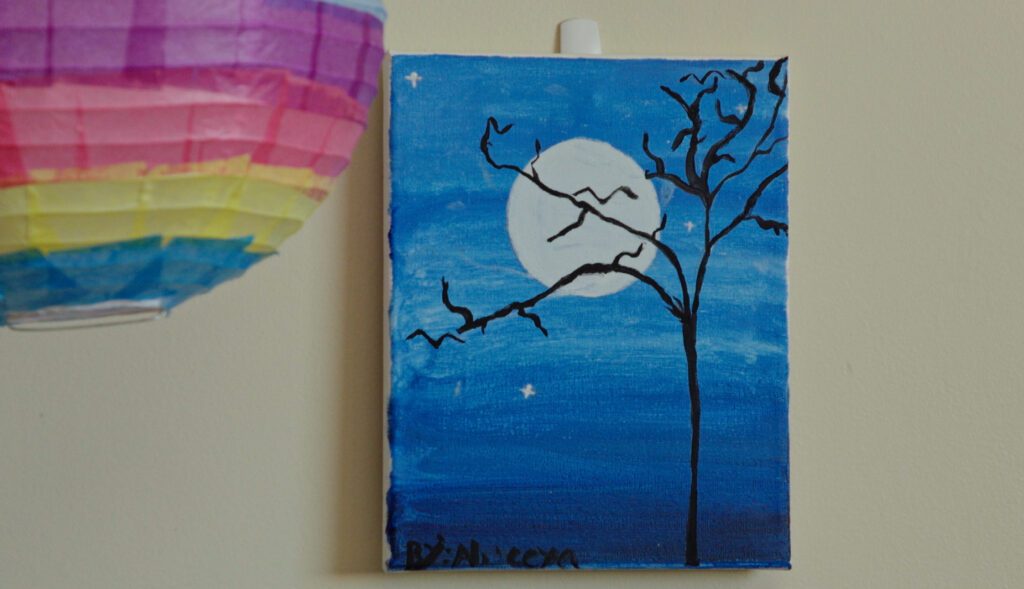
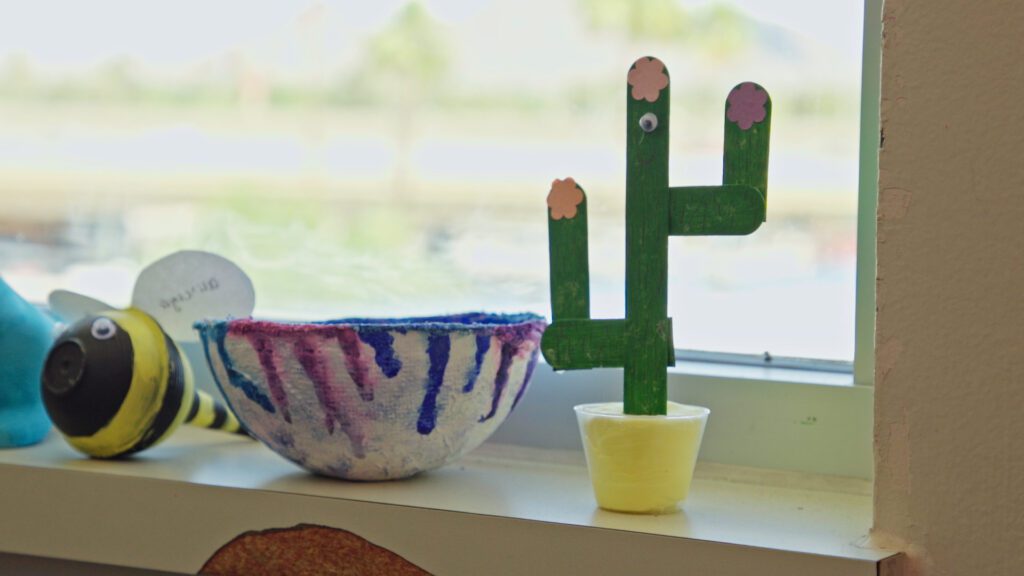
The girl forms a dome-shaped house out of popsicle sticks and fastens it at the top with a pipe cleaner. As the patient continues to work, Brinkop whispers supportive words from the sidelines, like “Oh, look at you go!” and “How beautiful!”
Then, the house breaks apart.
“This is hard,” the girl says with a smile.
“That’s why I call it the creativity challenge,” responds Brinkop.
The girl rebuilds with the clay, delicately sticking popsicle sticks to it. Her creation holds up well. Then she adds a generous amount of pillow stuffing beneath the duck. “This little ducky is on a soft white cloud,” Brinkop says. “I would like to be in the duck’s space. It looks safe and inviting.”
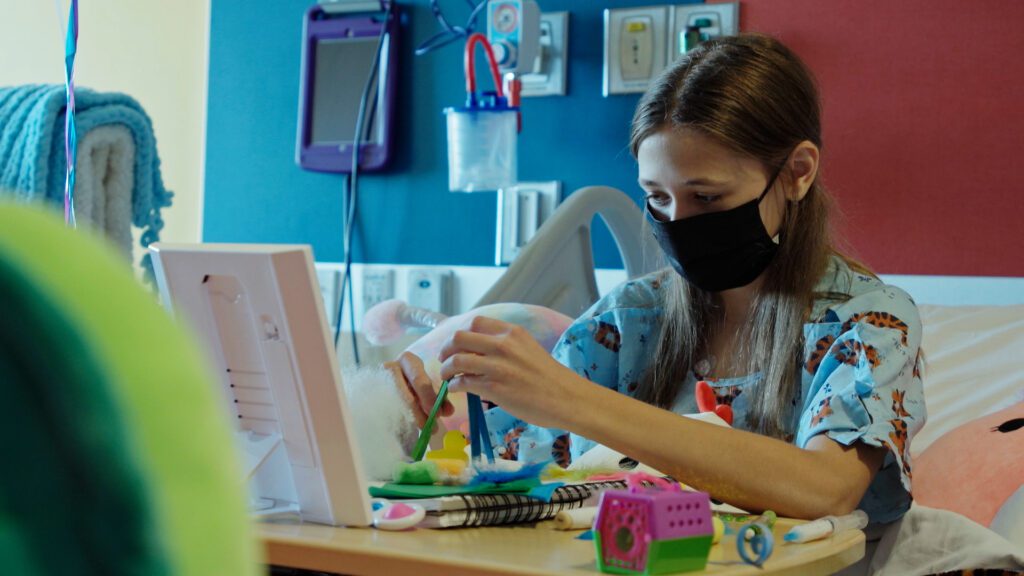
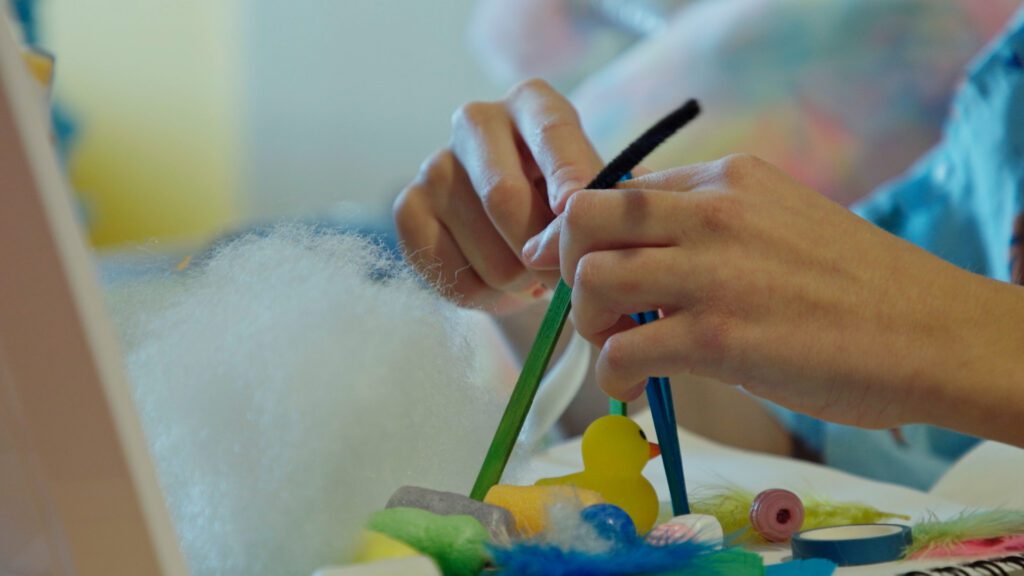
A safe space
Another benefit of art therapy is it provides a safe space for patients to reveal their feelings. Because art allows the child to express their thoughts in a manner that isn’t strictly verbal, there can be an added level of comfort not found in traditional therapy alone.
Art wasn’t always used in this manner. In fact, two sisters, Margaret Naumberg and Florence Cane, played key roles in the development of art therapy in the U.S. In 1914, Naumberg founded the Children’s School (later renamed the Walden School), where she applied her belief that teaching through self-directed learning was best practice.
A few years later, Naumberg invited Cane to teach art at Walden. At the time, Cane noticed art instruction was focused on teaching children how to draw realistically. In contrast, Cane advocated for scribbling that tapped into a child’s unconscious mind, a tactic Brinkop now uses at Phoenix Children's.
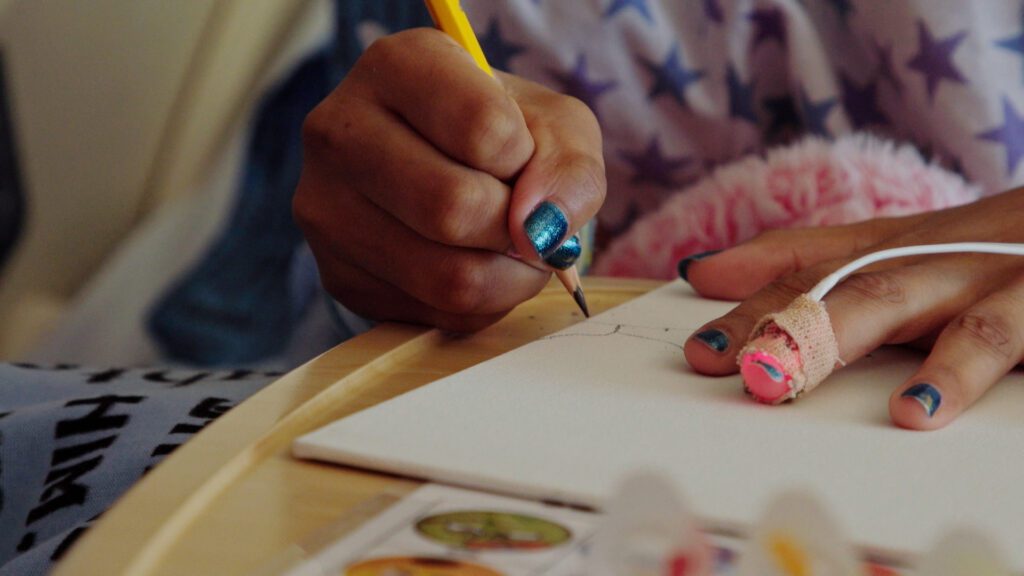
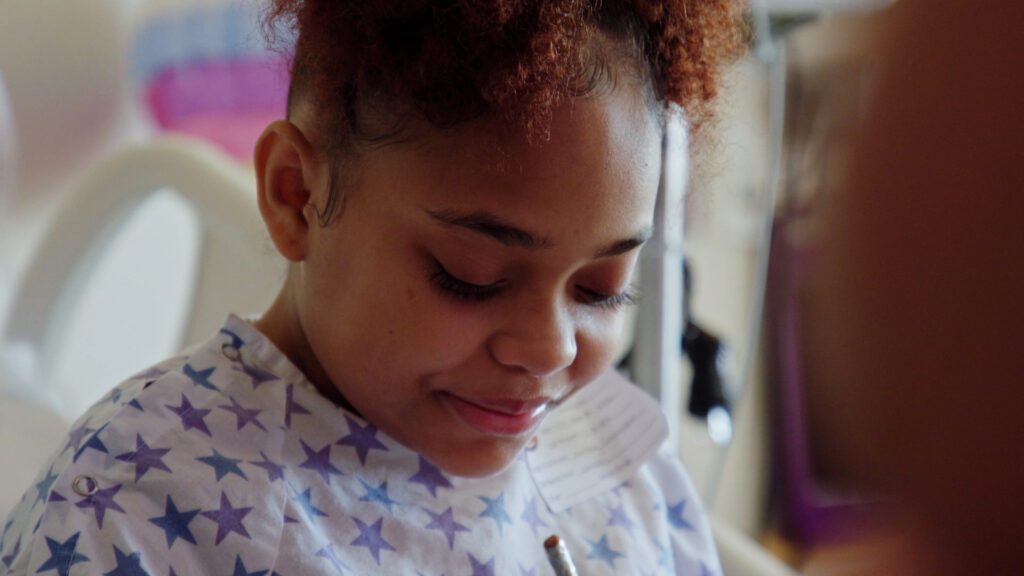
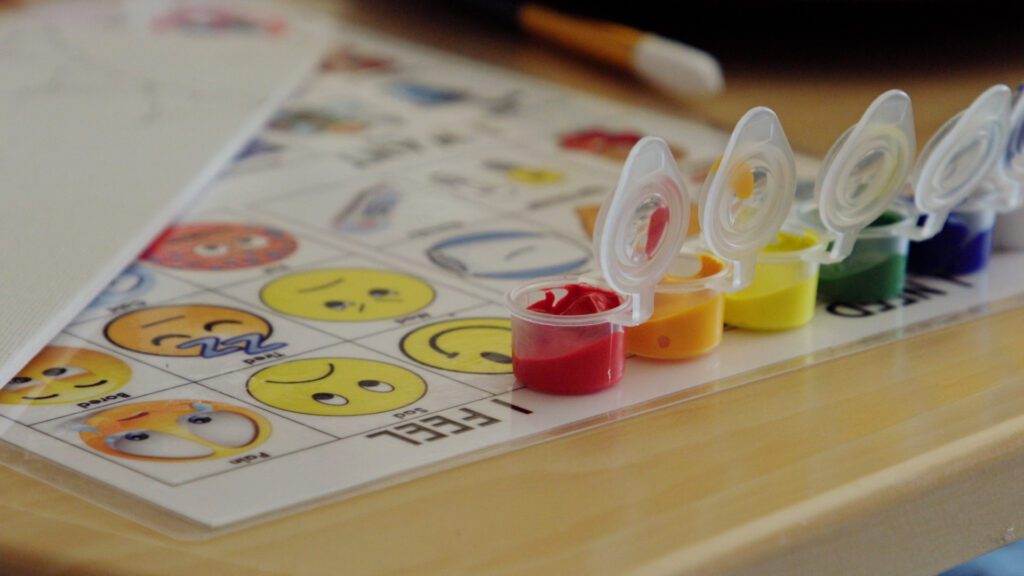
When a child is ill or injured, words often fail. This is usually because the child does not have the vocabulary yet to match the experience, or because the child feels they must protect the adults around them from their feelings. Art therapy helps reveal a patient’s innermost thoughts. Tracy Councill, an author of “Handbook of Art Therapy,” recounts a powerful example where art helped a cancer patient find words:
“During my early years as an art therapist with pediatric cancer patients, I worked with an 8-year-old boy whose artwork evolved around the theme of punishment. I decided to interpret his art.
‘You know,’ I said, ‘doctors and nurses don’t know exactly why kids get cancer, but they do know it isn’t their fault. Cancer isn’t a punishment—it’s when a person’s cells don’t work right.’
He stopped what he was working on, looked me straight in the eye and said, ‘So you mean I got sick for nothing?’ ‘Well, kind of,’ I said, ‘but we do know it isn’t your fault.’
Though he had heard these words before, our work together in art allowed him to consider an alternative explanation for his guilt.”
Brinkop has had similar experiences at Phoenix Children’s. She recounts, “Art is a neutralizing form of communication. The patients do not feel threatened when creating art, and this helps them let their guard down and verbalize how they're feeling.”
A coping tool for life
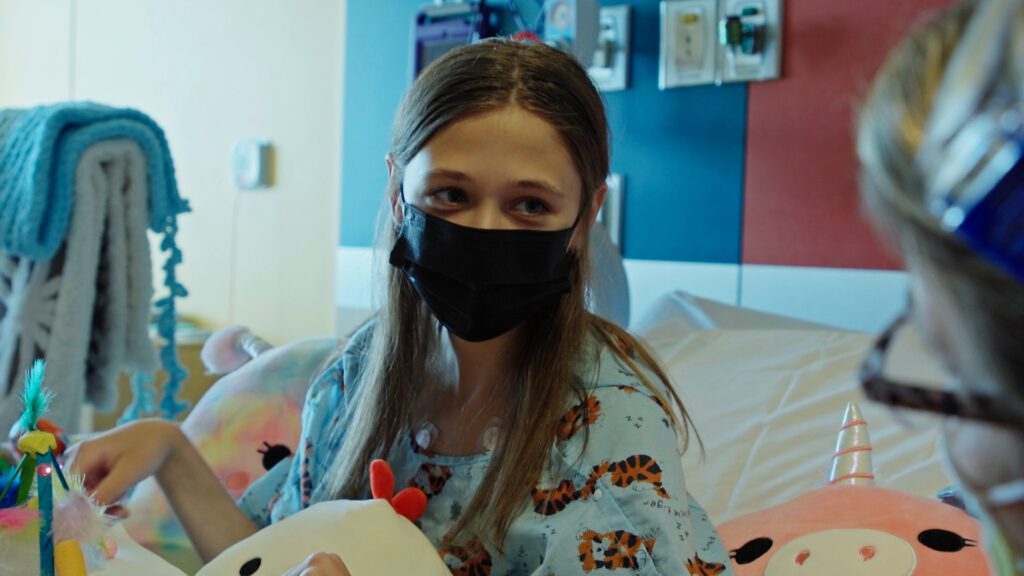
“Okay, I think I’m done,” the artist says.
“It’s beautiful; I love it!” responds Stephanie. “If you were to give this space a name, what name would you give it?”
“Cloud Fortress,” says the girl.
“I would love to stay in Cloud Fortress. Can you tell me what this experience was like for you as the artist?”
“I wanted to give it a pillow on the bottom so the duck would feel comfortable. But I also wanted to add walls and a roof to give it more safety. I added beads to the structure so it would stand strong.”
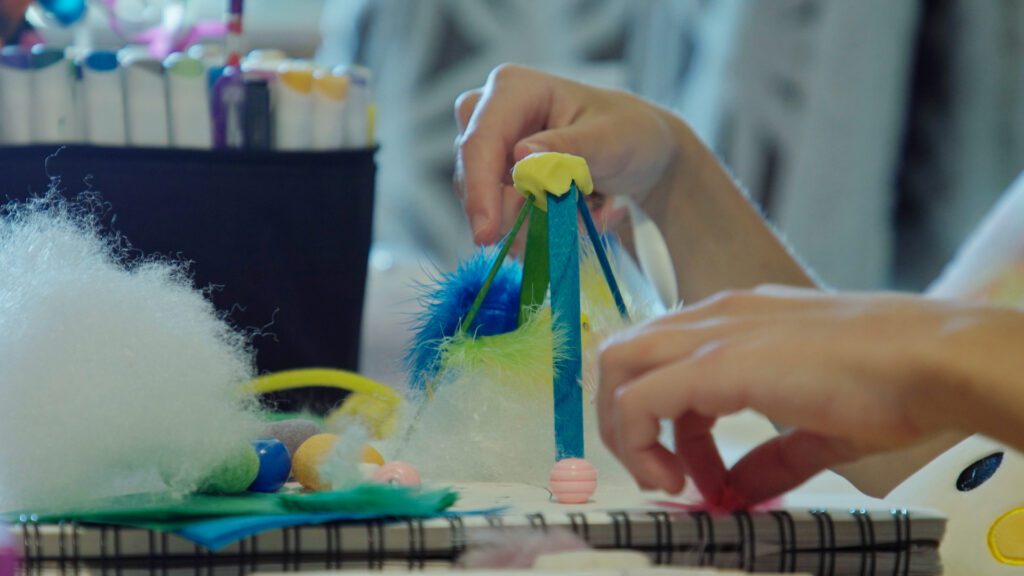
“It’s a very private space—it’s enclosed and soft. You did great!”
Although Brinkop has worked with hundreds of patients at Phoenix Children’s, she’s never seen a patient creation be “remotely close” to another’s. It’s the same materials. The same challenge. But each child creates a sculpture that has never been done before.
When a patient is released from the hospital, Brinkop plants a seed in their mind—she encourages the child not only to use art as a coping tool in the hospital, but also to use it throughout his or her entire lifetime. Art helps people make sense of what they are going through and come out more resilient than before.
“Art is my therapy,” Brinkop says, “it can make life more manageable. I believe profoundly in the healing aspect of art.”
The Therapeutic Arts Program is one of more than 170 programs and services funded by philanthropy at Phoenix Children’s. Help us continue to provide holistic healing to children by donating today.

